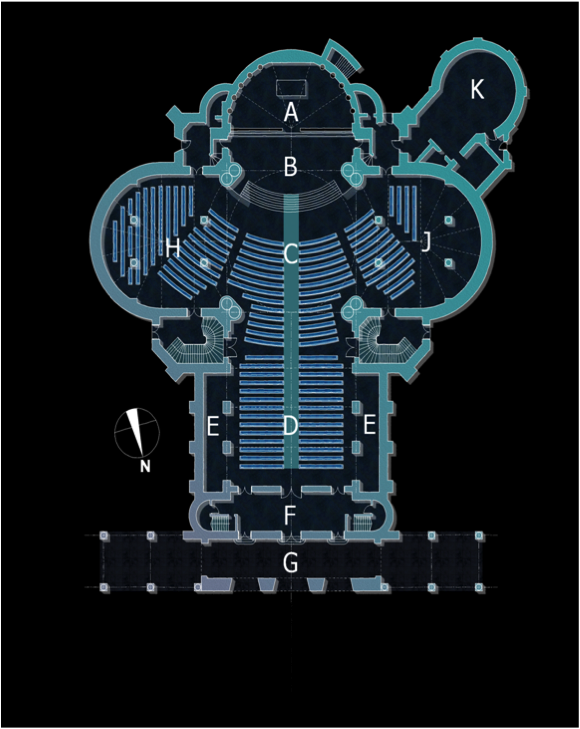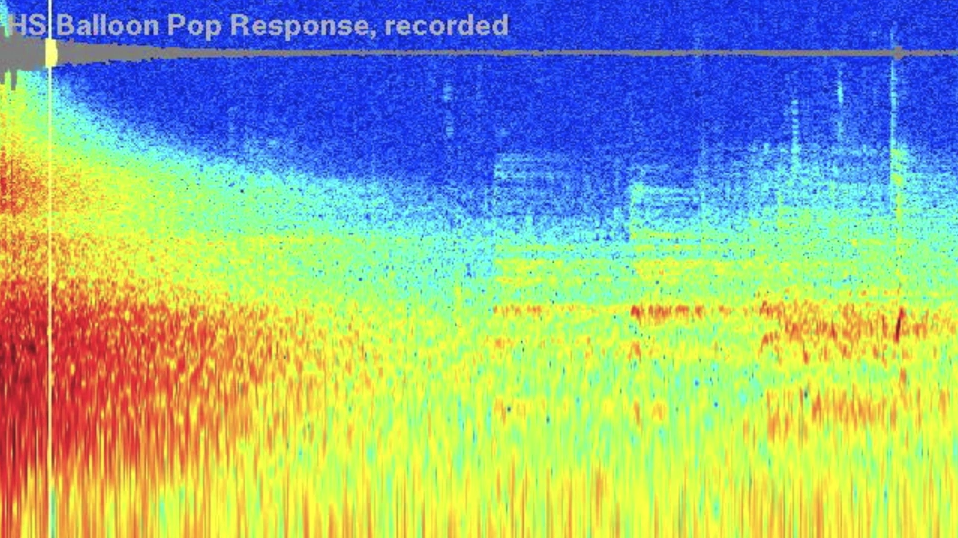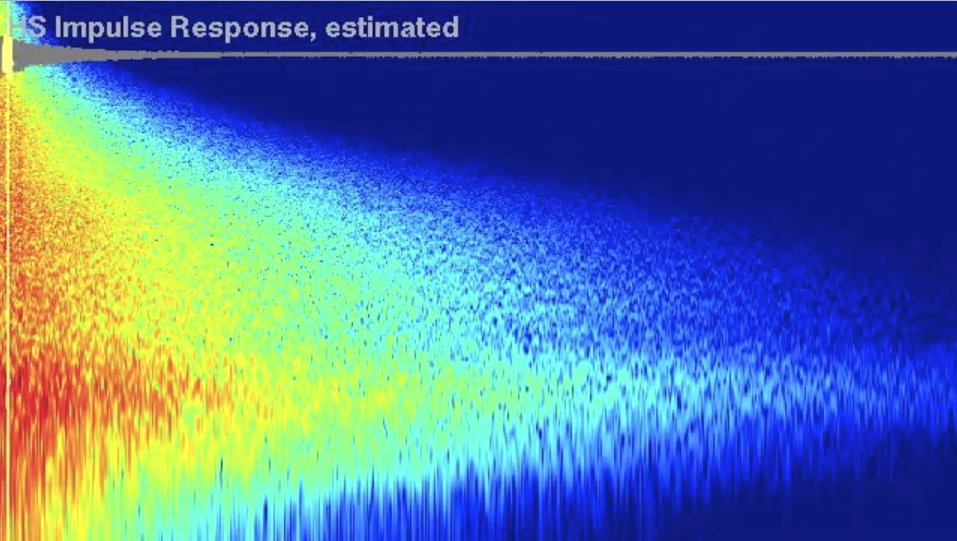The Acoustics of Hagia Sophia
The Acoustics of Hagia Sophia
Sound carries with it an imprint of the space in which it originates. Like any other space, the Hagia Sophia has a characteristic sound. Because of its dimensions and physical features, sound produced within the Hagia Sophia carries for a very long time. There are established methodologies to try to isolate the effects that a space has on acoustic signals. What follows here is a step-by-step account of how we captured the acoustics of Hagia Sophia.

The floorplan of the Memorial Church.
Sound and Space. Above, a moving spectrogram shows how a studio-recorded "dry" signal is transformed by the acoustics of Memorial Church. Red areas indicate sound components with high energy. Note how these components are smeared by Memorial Church in the "wet", reverberant signal.
The simple sound of a balloon pop reveals the acoustic characteristics of a room. We call this an impulse response. The graph to the right depicts the impulse response of Stanford University's Memorial Church. The following video of a balloon pop shows how this impulse response was recorded.

Video of popping a balloon in Memorial Church to capture the church's acoustic signature.
In a room, each pulse trails behind it a pattern of reflected energy, which is the room's impulse response. Using a mathematical operation called convolution, we were able to synthesize the Greek hymn Trisagion, recorded in a studio, with the reverberant qualities of Memorial Church.
The hymn Trisagion recorded in a studio and synthesized to sound as if it were recorded in Stanford's Memorial Church.
We did the same thing in Hagia Sophia: We recorded a few balloon pops and attempted to extract its acoustic nature. This recording's frequency response is depicted below (left). Furthermore, we built a mathematical model that simulates this impulse response based on scientific theory of sound propagation. The modeled frequency response is also depicted below (right).

The recorded balloon pop at Hagia Sophia.

The modeled impulse response of Hagia Sophia.
We recorded the vocal group Capella Romana performing the Prokeimenon in a virtual Hagia Sophia. To the right is a video of the chanters performing at Stanford's Center for Computer Research in Music and Acoustics (CCRMA), in the room where the dry signals were recorded. Each vocalist is wearing earbuds and listening to themselves perform as if they were inside the Hagia Sophia.
The vocal group Capella Romana performs Prokeimenon at CCRMA.
Finally, we use our measurements and model to process the CCRMA recording of the chanters with the acoustics of the Hagia Sophia.
The recording of Prokeimenon by Capella Romana is synthesized to sound as if it were recorded in the Hagia Sophia.